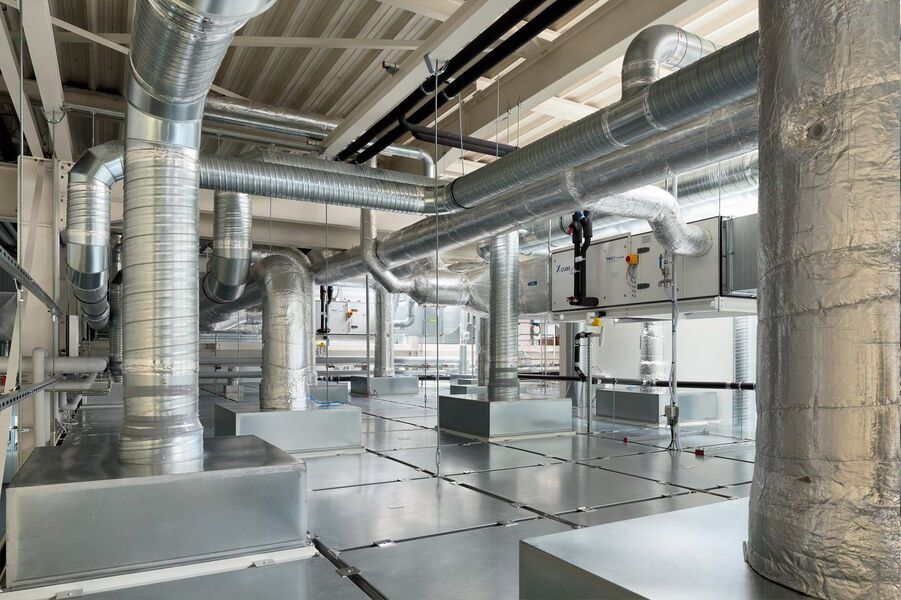Mechanical ventilation and air conditioning
Mechanical Ventilation and Air Conditioning: Ensuring Comfort and Health
Mechanical ventilation and air conditioning play pivotal roles in creating and maintaining a comfortable indoor environment. From residential homes to commercial spaces, the proper functioning of these systems is crucial for optimal air quality and overall well-being.
Understanding Mechanical Ventilation
Mechanical ventilation refers to the process of exchanging indoor air with fresh outdoor air using mechanical systems. It ensures a continuous flow of clean air, preventing the buildup of pollutants and allergens. Various systems, including exhaust fans and ventilation units, contribute to maintaining a healthy indoor atmosphere.
Role of Air Conditioning in Indoor Environments
Air conditioning, on the other hand, goes beyond maintaining a comfortable temperature. It involves the regulation of humidity and the removal of airborne particles, creating a pleasant and healthy living or working space. Modern air conditioning systems are designed not only for thermal comfort but also for improving overall air quality.
Benefits of Proper Ventilation and Air Conditioning
Investing in effective ventilation and air conditioning systems brings forth a multitude of benefits. Firstly, it significantly improves indoor air quality by reducing pollutants and contaminants. Secondly, these systems contribute to energy efficiency, leading to cost savings. Lastly, the health and well-being of occupants are positively impacted, with a direct correlation between air quality and overall health.
Challenges in Maintaining Indoor Air Quality
Despite the advantages, maintaining optimal indoor air quality presents challenges. Common issues include inadequate ventilation, poorly maintained systems, and the presence of indoor pollutants. These challenges can lead to health problems, reduced productivity, and increased energy consumption.
Choosing the Right Mechanical Ventilation System
Selecting the right ventilation system depends on the specific requirements of the space. For residential settings, individual room ventilation may suffice, while commercial spaces may benefit from centralized ventilation units. Energy-efficient options, such as heat recovery ventilation (HRV) systems, are gaining popularity for their ability to recapture and reuse energy.
Key Components of Air Conditioning Systems
Understanding the key components of air conditioning systems is essential for proper maintenance. The compressor, evaporator, condenser, and refrigerant all play vital roles in regulating temperature and humidity. Regular maintenance, including cleaning filters and checking refrigerant levels, ensures the longevity and efficiency of the system.
Ventilation and Air Conditioning in Commercial Spaces
Businesses and offices face unique challenges when it comes to ventilation and air conditioning. Compliance with regulations, such as ASHRAE standards, is crucial. Proper system design, regular inspections, and employee awareness contribute to a healthy and productive work environment.
Innovations in Mechanical Ventilation and Air Conditioning
Advancements in technology have led to innovations in ventilation and air conditioning. Smart systems, equipped with sensors and automation, optimize energy usage based on occupancy and external conditions. Sustainable solutions, such as solar-powered ventilation, contribute to reducing the environmental impact of these systems.
Common Misconceptions About Ventilation and Air Conditioning
Addressing misconceptions is vital in promoting awareness. One common myth is that opening windows alone provides sufficient ventilation. In reality, mechanical ventilation ensures consistent air exchange, even in sealed environments. Another misconception is that lowering the thermostat temperature rapidly cools a room, neglecting the importance of humidity control.
DIY Maintenance Tips for Ventilation Systems
Homeowners can take proactive steps to maintain ventilation systems. Regularly cleaning vents and filters, checking for blockages, and ensuring proper insulation contribute to system efficiency. However, professional inspections and maintenance are essential to address underlying issues and prevent potential problems.
The Future of Mechanical Ventilation and Air Conditioning
The future of these systems holds promising developments. Integration with smart home technologies will enhance user control and energy efficiency. Sustainable materials and designs will reduce the environmental impact. The ongoing focus on innovation aims to create systems that not only provide comfort but also prioritize environmental responsibility.
Balancing Temperature and Humidity
Achieving the right balance between temperature and humidity is crucial for comfort and health. High humidity levels can lead to mold growth and discomfort, while low humidity can cause respiratory issues and dry skin. Proper system settings and regular monitoring help maintain the ideal indoor environment.
Case Studies: Successful Implementation in Various Settings
Examining real-world examples showcases the successful implementation of ventilation and air conditioning solutions. From energy-efficient designs in residential homes to optimized ventilation in large commercial buildings, these case studies provide valuable insights into the positive outcomes of prioritizing indoor air quality.
Conclusion
In conclusion, mechanical ventilation and air conditioning are integral components of maintaining a healthy and comfortable indoor environment. As technology continues to advance, so does our ability to create systems that not only enhance our living and working spaces but also contribute to a sustainable future. Prioritizing regular maintenance, staying informed about advancements, and addressing misconceptions ensure that these systems continue to benefit us in the long run.
Frequently Asked Questions
- How often should I replace air filters in my ventilation system?
- It's advisable to replace air filters every 3 to 6 months, but this can vary based on usage and the type of filter. Check manufacturer recommendations for specific guidance.
- Can I install a ventilation system in my existing home?
- Yes, it's possible to retrofit a ventilation system into an existing home. Consult with a professional to determine the best solution based on your home's layout and requirements.
- Are smart ventilation systems worth the investment?
- Smart ventilation systems can offer energy savings and improved efficiency. Assess your needs and budget to determine if the added features align with your priorities.
- What are the signs that my air conditioning system needs maintenance?
- Common signs include reduced cooling efficiency, strange noises, and unusual odors. Regular inspections and maintenance can identify and address potential issues.
- How does indoor air quality impact health?
- Poor indoor air quality can lead to respiratory problems, allergies, and other health issues. Proper ventilation and air conditioning play crucial roles in maintaining a healthy indoor environment.




Comments
Post a Comment